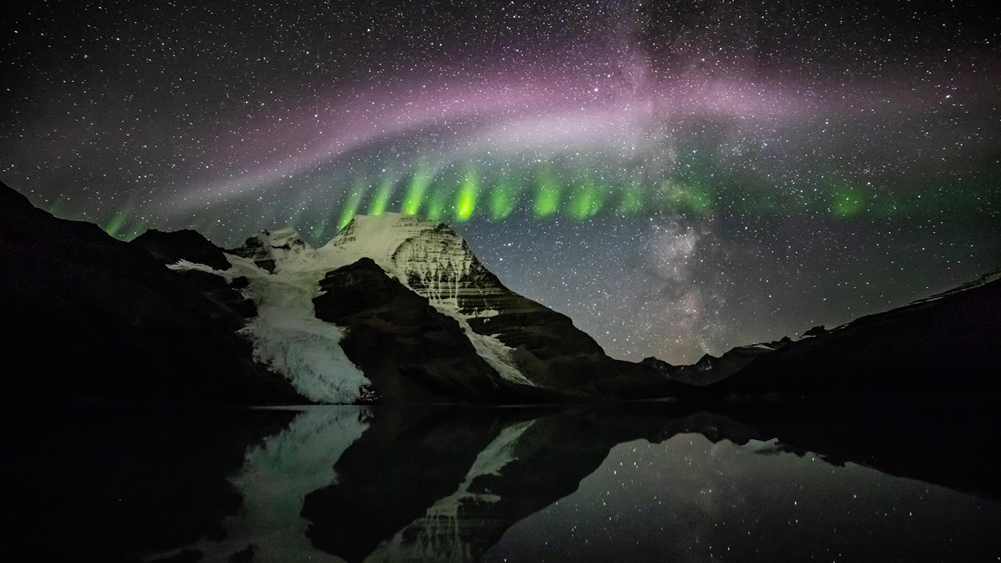Phenomena called “Steve” and “picket fence” are masquerading as auroras, graduate student argues.
[Dec. 8, 2023. Read the full article by Robert Sanders in Berkeley News] The shimmering green, red and purple curtains of the northern and southern lights — the auroras — may be the best-known phenomena lighting up the nighttime sky, but the most mysterious are the mauve and white streaks called Steve and their frequent companion, a glowing green “picket fence.”

The shimmering green, red and purple curtains of the northern and southern lights — the auroras — may be the best-known phenomena lighting up the nighttime sky, but the most mysterious are the mauve and white streaks called Steve and their frequent companion, a glowing green “picket fence.”
First recognized in 2018 as distinct from the common auroras, Steve — a tongue-in-cheek reference to the benign name given a scary hedge in a 2006 children’s movie — and its associated picket fence were nevertheless thought to be caused by the same physical processes. But scientists were left scratching their heads about how these glowing emissions were produced.
Claire Gasque, a University of California, Berkeley, graduate student in physics, has now proposed a physical explanation for these phenomena that is totally different from the processes responsible for the well-known auroras. She has teamed up with researchers at the campus’s Space Sciences Laboratory (SSL) to propose that NASA launch a rocket into the heart of the aurora to find out if she’s correct.
Vibrant auroras and glowing phenomena such as Steve and the picket fence are becoming more common as the sun enters the active period of its 11-year cycle, and November was a good month for Steve observations in the northern latitudes. Because all these transient luminous phenomena are triggered by solar storms and coronal mass ejections from the sun, the approaching solar maximum is an ideal time to study rare events like Steve and the picket fence.
Gasque described the physics behind the picket fence in a paper published last month in the journal Geophysical Research Letters and will discuss the results on Dec. 14 in an invited talk at the American Geophysical Union meeting in San Francisco.
She calculated that in a region of the upper atmosphere farther south than that in which auroras form, electric fields parallel to Earth’s magnetic field could produce the color spectrum of the picket fence. If correct, this unusual process has implications for how physicists understand energy flow between Earth’s magnetosphere, which surrounds and protects Earth from the solar wind, and the ionosphere at the edge of space.
“This would upend our modeling of what creates light and the energy in the aurora in some cases,” Gasque said.
“The really interesting thing about Claire’s paper is that we’ve known for a couple of years now that the Steve spectrum is telling us there’s some very exotic physics going on. We just didn’t know what it was,” said Brian Harding, a co-author of the paper and an SSL assistant research physicist. “Claire’s paper showed that parallel electric fields are capable of explaining this exotic spectrum.”
The paper was a side project from Gasque’s Ph.D. thesis, which is focused on the connection between events like volcanoes on Earth’s surface and phenomena in the ionosphere 100 kilometers or more above our heads.
But after hearing about Steve — which has now become an acronym for Strong Thermal Emission Velocity Enhancement — at a conference in 2022, she couldn’t resist looking into the physics behind Steve and the picket fence.
“It’s really cool,” she said. “It’s one of the biggest mysteries in space physics right now.”
[Dec. 8, 2023. Read more in the full article by Robert Sanders in Berkeley News]

